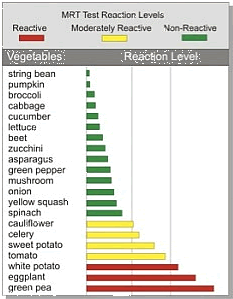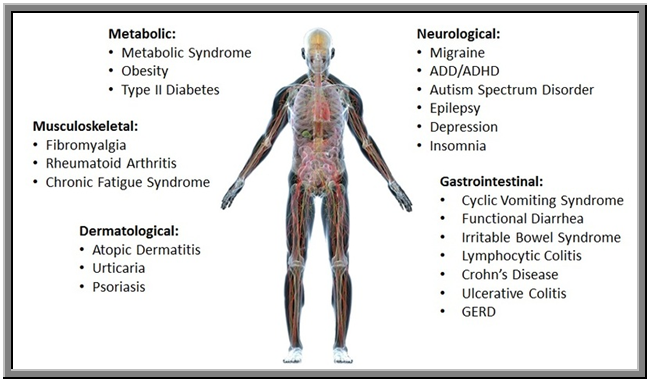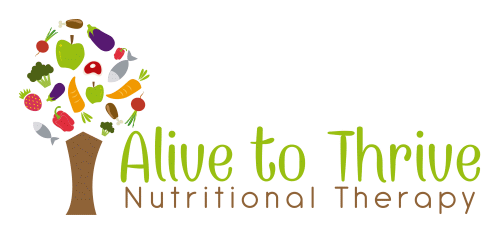I am thankful that I discovered the MRT 170 Food Sensitivity Test because even though I was eating a healthy diet, I still wasn’t feeling 100%. Sometimes after I ate, I could feel my heart race and I knew from past experience that my heart races when I am reacting to certain foods. The problem was that it was difficult figuring out which foods were causing the issue.
Luckily, my daughter’s holistic doctor recommended that she get the MRT to help improve her health. The test involves getting your blood drawn and then waiting a few weeks for the results. The results of the test arrive in a large booklet. The booklet contains both the MRT Food Sensitivity Test Results and the client specific LEAP ImmunoCalm Diet recommendations.
The test determines your safest or least reactive foods, these are the green results on the test. Your moderately reactive foods are your yellow foods. Finally, the red foods are the foods you are most reactive to and the ones most likely causing your health issues.

Sample MRT Test
The best part of the test results is that they tell you what to eat not just what not to eat. The diet is called The LEAP ImmunoCalm Dietary Program. LEAP stands for Lifestyle Eating and Performance. Your LEAP diet is specific to you and your individual food sensitivities.
The first week of the diet you are eating your least reactive green foods. After the first week, the diet slowly adds back more sensitive green foods. By slowly adding back your more reactive foods, you have a chance to listen to your body and make sure you are not reacting to your new foods.
I was so fascinated by my daughter’s test results that I decided that I should be tested also.
My test results showed that I was highly sensitive to bananas, lemons and cheddar cheese. Foods I had been eating almost every day. I was moderately sensitive to avocados too. After a few months of avoiding avocados, however, I found that I was able to tolerate them again in moderate amounts. (I determined this by using the Coca’s Pulse Test.) The best part of the diet was that I discovered I could eat cashews, peanuts, olives, beef, turkey, sesame oil, asparagus, lettuce and pineapple without any trouble. After the first week of eating mostly these foods, I felt much better and could slowly add more foods to my diet. I now eat a fairly normal diet but still avoid my red and yellow sensitive foods most of the time. I also avoid one green reactive food that I discovered I was sensitive to when I slowly added back my foods.
As a Nutritional Therapy Practitioner and a Pharmacist, I am able to order the MRT 170 test for clients. I am excited to offer this test and give my clients a chance to improve their health the way I did.
Health conditions where food sensitivities can play a primary or secondary role include:

These are the foods and chemicals that the MRT 170 tests for:

I think the MRT 170 test is a great place to begin a food elimination diet. After you eliminate foods and see what symptoms disappear, you can reintroduce foods and see how your body reacts/feels. It’s a great tool to begin listening to your body and experiencing how food can significantly affect your health.
The MRT 170 is also for people who have already tried various elimination diets (including the RESTART® Program) but have not achieved the results they were expecting or would like to improve their results. In my case, I found out that I could have some dairy (cottage cheese) but not all dairy (cheddar cheese).
Contact me today if you would like to have the MRT 170 Food Sensitivity Test. I can advise as to whether or not this test is a good fit for you and I will work with you to provide the education and support you need via phone and email to help you get the most out of the MRT 170 test!




